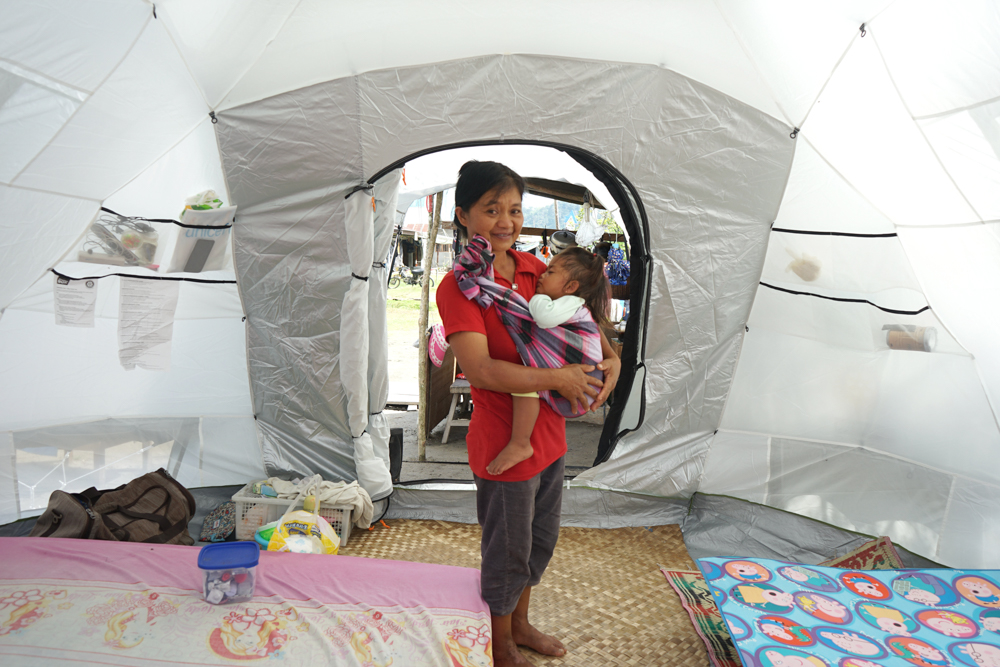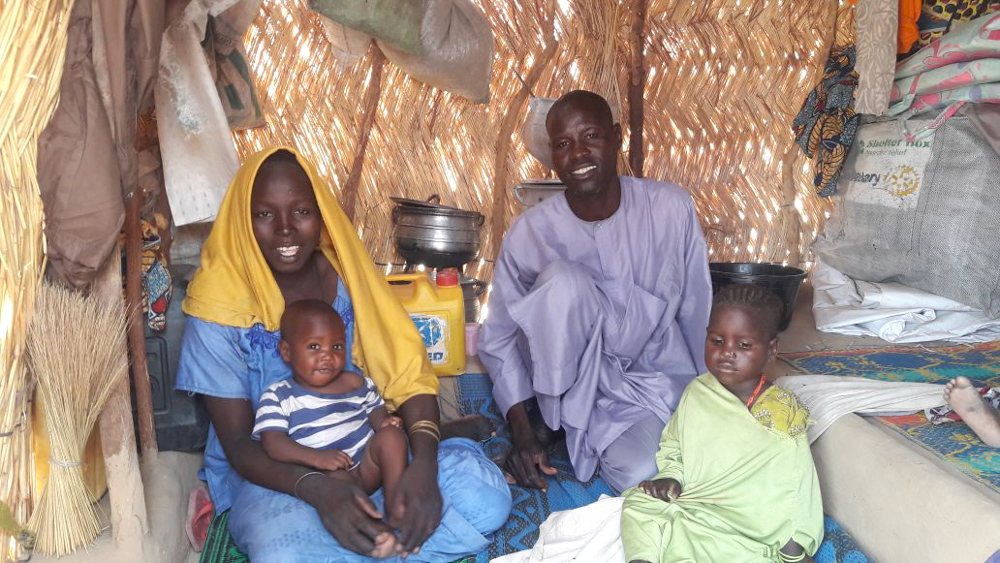ShelterBox Distributes Tents and Hope to the World’s Refugees
New Summerland Office Spreads Reach Even Further

They lived that way for a month until ShelterBox provided them a tent to erect where their house once stood. “The tent is very helpful,” said Erti. “We feel safe inside.” Though the family is “healing and life is slowly getting better,” they’re unsure what comes next. “We have no idea [what we’re going to do],” said Jonathan. “It could take up to ten months to fix the house. We might move. We are just focusing on the now.”
By day, Eric Schalla is a mild-mannered supervisor at the Tri-Co Reprographics print shop over on East Haley Street. A Cal Poly graduate and family man, his regular work week looks like any of ours. But should the call come, even in the middle of the night, he’s ready to pack his bag and jet to some far corner of the world.
Schalla, also a former logistics specialist in the Marine Corps, is a member of ShelterBox USA’s elite team of field volunteers who deliver their patented tents and tools of survival to refugees displaced by war and natural disasters. The relief organization is an affiliate of ShelterBox Trust in England, and, in 2015, they opened an office in Summerland. In 2017 alone, they provided shelter and aid to more than 160,000 people in 23 countries, including in the fallout from Hurricane Harvey in Texas, during the Rohingya refugee crisis in Bangladesh, and in the midst of the severe drought in Somaliland. After Montecito’s 1/9 Debris Flow, they handed out supplies from the Vons parking lot.
Schalla’s latest deployment was to northern Iraq, where thousands of Syrian refugees had settled into makeshift camps. It was Schalla’s job to ensure ShelterBox tents — heavy-duty, custom-made structures that can sleep a family of 10 — were distributed to those who needed them most. “It’s very rewarding because you’re right there on the ground,” he said. “It’s people helping people.”
Schalla was partnered with a nurse practitioner from the U.K. and a university student from Germany, both women. Each brought their own strengths and skills to the small unit. “You realize the teams are created in a certain fashion for a specific reason,” he said. Schalla was inspired to join ShelterBox after seeing its ubiquitous white tents in CNN coverage of the Haiti earthquake disaster. Some were used as surgical theaters and morgues.

With a ShelterKit that contained timber, rope, a tarp, nails, and tools, Khadija and Jabar were able to build their own shelter. “Now we have our own space as a family, and we have some privacy,” she said.
On a recent Thursday morning, ShelterBox USA President Kerri Murray stood inside a tent erected in her Summerland office space. The night before, it had been set up in the backyard of a Montecito donor as part of a big fundraising event. It went well, and Murray was excited. The organization had also recently been nominated for a Nobel Peace Prize. Murray was walking me through the tent’s features, like its front porch area and special insulation to accommodate a stove, and discussing ShelterBox’s strategy of partnering with on-the-ground NGOs to reach the most needy and vulnerable, whether it’s by helicopter, boat, or donkey. “We’re usually going where no one is coming for you,” she said.
Inside the teal tent boxes are also water filters, solar lighting, and cookware, Murray explained. Separate tool kits contain tarps, rope, nails, and tools, should someone’s home be damaged but salvageable. “We’re preparing every day for the worst day ever,” Murray said. School boxes are critical for when schools are bombed out, she went on. They’re filled with blackboard paint that can create a classroom almost anywhere, chalk, pens, coloring books, and a wind-up radio that lets kids tune into classes taught over the airwaves.
The field volunteer training program that Schalla went through is intense, Murray admitted — only 1 in 30 applicants makes it through the final nine-day course. But there are plenty of other ways to get involved here at home, she said, and the need is overwhelming — right now, there are over 85 million refugees spread across the globe, more than any other time in recorded history. Sixty-five million of them have been displaced through conflict, and 20 million because of natural disasters, which are increasing in frequency and ferocity from climate change.
ShelterBox USA operates on a lean annual budget of $2 million with only eight full-time employees, so it relies heavily on of the efforts on volunteers, Murray said. “We couldn’t do our work without them.” Last year, the organization exhausted many of its supplies and had to turn down requests for aid. “That’s really hard,” Murray said. The recent Montecito fundraiser was a good start toward generating awareness here in the Santa Barbara area, she went on, and the team is working hard to maintain the momentum of giving. “Helping ShelterBox is helping someone you’ll probably never meet, but you can have a huge impact on their lives,” she said.
Each tent comes with a personalized certificate of ownership so the inhabitants feel a true sense of home. “It’s a gift,” Murray said. “No one can take it from them. It goes a long way in restoring someone’s dignity after they’ve lost everything.” While they’re meant as temporary shelters, some refugees may live in theirs for months or even years.
For more information, and to make a donation, visit shelterboxusa.org.



